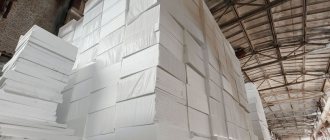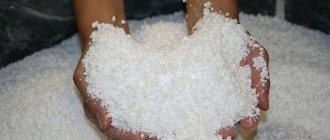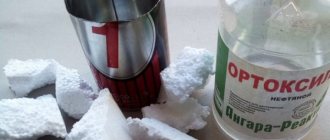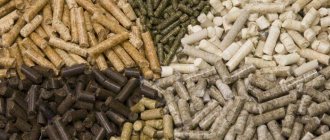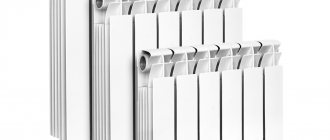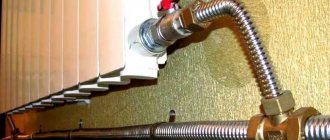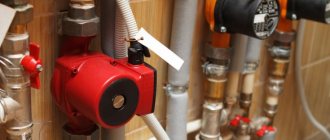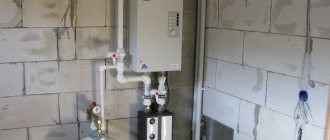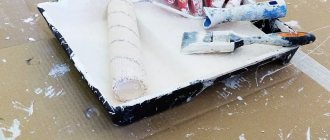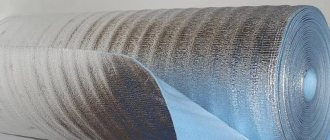- October 31, 2018
- Equipment
- Ekaterina Morkina
Relatively recently, expanded polystyrene, as dense foam is also called, was not of interest to various companies and individual developers. The material was used as a filler for refrigerators. Then the situation gradually began to change. Such changes occurred with the advent of construction rigid foam. Today, its technical characteristics are known to many who are involved in the insulation of buildings and structures during construction at a professional level.
Rigid foam is considered an effective material that is used for exterior and interior decoration. It quickly became popular and spread on a private and industrial scale. Thanks to its wide range of functions, you can’t do without it when performing construction work. It is mainly used as insulation.
Peculiarities
Its positive aspects are heat retention and sound insulation properties.
For example, polystyrene foam, which has a layer of 20 mm, is equal in resistance to a brick layer. Therefore, it is convenient to work with it and is not very difficult to lift. The material also has characteristic features:
- there are no problems with its delivery;
- it is easy to cut;
- stamping can be done by heating dense foam;
- easy to process and glue;
- reasonable cost;
- does not lose its shape even if placed in water;
- can be used at temperatures up to +80 degrees;
- low ability to absorb moisture;
- is resistant to acids and alkalis.
Slab size
Foam boards are produced mainly in three sizes: 0.5 * 1, 1 * 1 and 2 * 1 m. It is immediately worth noting that this insulation is easy to cut, so no problems should arise during the installation process. So, it is better to choose the material that is most suitable for the area of the insulated surface. As a rule, for insulating balconies, loggias and apartments in apartment buildings, the choice is made on slabs measuring 0.5 * 1 m : they are most convenient to work with, they are more economical, and it will be easier to insulate all kinds of complex facade details with such material. But if you need to insulate a private house, the walls of which have a regular flat surface, then it makes sense to use slabs measuring 1 * 1 m. The largest material, slabs measuring 2 * 1 m are used least often for particularly large buildings.
Production
Dense foam is created using the pressing method. In this case, the granules are connected very firmly. Therefore, the insulation almost does not crumble and is difficult to break. This material will help:
- reduce costs for the construction of heating equipment;
- save heating costs;
- reduce the thickness of the walls;
- visually increase the area of the room.
Thickness
Foam thickness is a parameter that should be chosen based on an individual set of factors: wall thickness, wall material, climatic conditions, etc. That is why it is impossible to say that a 5 cm thick layer of polystyrene foam is suitable for absolutely everyone, although this is the material most often used for insulating apartment buildings in the temperate zone.
Everyone will be able to calculate the required insulation thickness using the tables below. So, let's say you live in a house whose walls consist of two rows of bricks. The heat transfer resistance will be 0.405 m²*°C/W. Considering that the thickness of the walls is 54 cm. At the same time, the standard value, for example, for Moscow is 3.16 m2*0C/W, the difference is 2.755 m2*C/W, and this is exactly what needs to be compensated for with insulation, the thermal conductivity coefficient of which in our case is 0.031 W /m*°С. It turns out that the thickness of the insulation will be equal to 0.031 * 2.755 = 0.085 m, which is 8.5 cm.
Application
Rigid foam is so called because it is such a versatile material that it can be used in many areas of construction. For example, they can be used to insulate the foundation. Typically used as formwork. In this regard, it is possible to reduce the cost of tying reinforcement.
It will prevent the foundation from freezing. You can also insulate floors with polystyrene foam. In this case, slabs with a thickness of 50 mm are used. Rigid foam is now very commonly used for piping. It reduces heat loss in the pipe by 25%.
Types of expanded polystyrene foam - EPS
The classification of expanded polystyrene foam is based on:
- density;
- manufacturing technology;
- plate shape.
Brands and types of expanded polystyrene foam by density
Depending on the maximum density value, foamed polystyrene foam is divided into grades.
The following types of this foam are produced by density:
| Foam brand | Minimum density value, kg/cub.m. | Thermal conductivity of the material in a dry state, at a temperature of (25 ± 5) 0C, W/ (m*K) |
| PPS10 | 10 | 0,044 |
| PPS12 | 12 | 0,042 |
| PPS13 | 13 | 0,041 |
| PPS14 | 14 | 0,040 |
| PPS16F | 16 | 0,038 |
| PPS17 | 17 | 0,039 |
| PPS20 | 20 | 0,038 |
| PPS23 | 23 | 0,037 |
| PPP25 | 25 | 0,036 |
| PPS30 | 30 | 0,037 |
| PPS35 | 35 | 0,038 |
Expanded polystyrene foam boards depending on manufacturing technology
Depending on the manufacturing technology, the following types of polystyrene foam are produced:
- P – produced by cutting from large blocks;
- RG – cut graphite-containing from large blocks;
- T – thermoformed.
Foamed polystyrene foam boards depending on the plate shape
Depending on the shape of the foam plates, they are produced in two types:
A – cut slabs with a continuous, smooth side edge.
B - cut or formed slabs with a quarter-size side edge for easier and more efficient installation.
Dimensions of expanded polystyrene foam boards
Modern technologies make it possible to produce polystyrene foam boards of various sizes. According to GOST, the length of the slabs varies from 500 to 6000 mm in increments of 50 mm, and the width - from 500 to 2000 mm in increments of 50 mm. Foam thickness from 10 to 500 mm in 5 mm increments.
Example and explanation of the symbol for expanded polystyrene foam boards
The markings, which indicate not only the overall dimensions, but also the type of material and type of edge, allow you to understand the specifics of expanded polystyrene foam boards.
The symbol may indicate special characteristics, for example, the color of the foam or brand. Also, the marking must indicate GOST, in accordance with which the material is produced.
Example of decoding symbols: PPS16F-R-A-2000x1000x150 GOST 15588-2014
- expanded polystyrene for facade systems (PPS16F);
- density – 16 kg/cub.m. (PPS16F);
- produced by cutting from large blocks (P);
- has a continuous, smooth side edge (A);
- length – 2000 mm;
- width – 1000 mm;
- thickness – 150 mm;
- manufactured in accordance with GOST 15588-2014.
Deciphering the markings allows you to ensure that the material is suitable for the planned work.
Unique properties
It is very important that the material has increased fire resistance. Because a fire retardant is added during its production. This is a substance that will prevent dense foam from actively burning. It has long been proven that polystyrene foam is an environmentally friendly material and safe to use. It does not change its original shape and size throughout the entire period of use. According to recent studies, during which the properties of this material were tested, it was found that polystyrene foam is the densest foam plastic.
Because it is able to maintain its mechanical properties for at least 80 years. This is a long period of time. This material is truly durable and unpretentious in use. These indicators make it a universal and popular building material that can be used in various areas of industrial production.
What is dense foam called? It is called a material that has a unique quality and is not exposed to various microorganisms, as well as mold. Not all materials have such positive characteristics. Solid foam is resistant to corrosion and can withstand the effects of cement, alkalis, and acids. But it exhibits short-term resistance to acetone and gasoline.
Is vapor barrier and waterproofing necessary?
Polystyrene foam is a material that has fairly good resistance to the passage of vapors. When insulating walls made of block materials or brick, there is no need to install vapor barrier membranes.
When insulating the facade of a wooden building, a vapor barrier membrane is needed. It is attached between the wall and the foam plastic so that a ventilation gap is formed.
Waterproofing is not installed under foam plastic.
IMPORTANT!
If walls are insulated with foam plastic under siding, then a diffusion membrane is used, not a vapor barrier.
These two materials differ in their ability to pass vapors.
Where it is prohibited to use polystyrene foam
It is also necessary to pay attention to the fact that rigid foam is not recommended for use as insulation for a bathhouse. Since when heated and at the same time high humidity, styrene can be released. It is also not intended to be used for insulating internal window slopes. If you take into account all the recommendations, the foam will last up to 100 years.
High-quality installation of polystyrene foam boards will create silence in the room without extraneous noise. In hot weather, it prevents the outside walls from overheating. In this case, it is not necessary to use air conditioning in summer.
Therefore, when you need to finish a room, it is better to choose dense foam. The name “dense foam” is used because all the characteristics that it possesses prove its wide application. After all, not every building material meets the requirements necessary to improve safety. This material can even be used as a stand-alone structure when installing floors.
When installing dense foam plastic, you can use a knife. This material cuts well. You can initially order the size of the slab you need. Installs as easily as a regular foam board.
Today, many manufacturers are developing more and more versatile types of foam. Because for each type of construction work you can select a specific material. For example, to cladding a room, you can use a material that contains a fire retardant.
To equip the foundation, sheets of dense foam are used. Because they have high strength. Thus, from this article it became clear what dense foam is called and the main characteristics of the material. Now you can carry out construction work with ease.
Facade insulation methods
Insulation of the facade with foam sheets can be done in several ways:
- using the “wet façade” method. This method involves fastening the slabs with glue, applying a reinforcing mesh to the glue layer, leveling with plaster and applying the finishing cladding;
- vertical way . The vertical method, in the order of work, resembles the wet method, only the foam boards, in addition to glue, are attached to the wall with a metal frame that holds them in a vertical position;
- using thermal panels . When insulating with foam plastic under thermal panels, the insulation boards are laid on a protective film using mounting washers. Next they are covered with thermal panels. The installation option can be done with or without wooden sheathing;
- under the siding. This method requires the mandatory installation of a sheathing on which the siding is attached and additional slats that provide air exchange.
In addition, to insulate houses made of timber, you must follow slightly different instructions than when installing foam plastic on a brick or concrete wall. In this case, a vapor barrier membrane is laid and air exchange is ensured between it and the wall.
Types of foam depending on density, manufacturing technology, sheet shape and size
Low density and light weight, excellent thermal characteristics and good sound insulation make polystyrene foam one of the most popular thermal insulation materials. Modern technologies make it possible to produce various types of foam, which differ in characteristics, cost and purpose. Knowing the differences will help you choose the optimal material for various jobs.
High-hardness polystyrene PS-1, polystyrene PS-4, polystyrene foam PVC
Thermal insulation portal tutteplo.ru presents - Rigid tile (pressed) foam of the PS-1, PS-4, PVC brands made according to TU 2244-461-05761784-01.
Tile foam PS-1, PS-4 is produced by the pressing method based on polystyrene and is a closed-cell plastic.
Foams are lightweight, have good heat and sound insulation properties, high electrical performance and low water absorption. Polystyrene foam PS-1 is a radiotransparent material.
Foam plastics are used in various branches of technology and the national economy. Structures made using these materials have high strength and rigidity with low weight.
The good electrical insulating properties of foam plastics make it possible to produce various products for the radio and electrical industries.
Polystyrene foam PS-1 is used in various fields of radio engineering as a radiotransparent material, where high resistance to electrical breakdown is not required.
Polystyrene tiles grades PCV-1, PCV-2. Polystyrene tiles based on PVC resin are produced by the pressing method and are closed-cell plastics.
All brands of polyvinyl chloride foam are characterized by low water absorption and are self-extinguishing, gasoline and oil resistant material. Polyvinyl chloride foam can be used to make floats that operate in fuel and oil. The high chemical resistance of PVC allows the use of foam plastics for the manufacture of tanks intended for storing and transporting volatile liquids (alcohol, gasoline, etc.). High-quality polystyrene and polyvinyl chloride foam is a closed-cell polymer material. This structure gives solid foam a number of unique properties, including:
- high strength
- high thermal insulation properties
- low water absorption
- high levels of sound insulation and noise absorption
- buoyancy
- and many others, which qualitatively distinguishes rigid foam from other thermal insulation materials.
Press technology provides solid foam with the highest strength in its class, which allows it to be used as a structural material. At the same time, a high level of strength characteristics is guaranteed, which is not inherent in other types of thermal insulation materials, especially when operating at normal and low temperatures. Due to the chemical nature of solid foam and its high biological resistance, it is not digestible by animals and does not serve as a breeding ground for fungi and bacteria, including putrefactive ones. The combination of these qualities determines the high durability of pressed foam.
PROPERTIES OF TILE (PRESSED) FOAM
Technology: Using pressing technology, foam plastics are produced by pressing the composition in presses, followed by foaming the blanks with steam in foaming chambers.
Weather resistance Foams are weather resistant materials. PS and PVC foams have very high weather resistance and can be used outdoors for a long time. The works of domestic and foreign researchers note a tendency to increase the strength characteristics of foam plastics during a long stay in natural conditions. Foam plastics resist freezing-thawing processes well, have low water absorption, and high biostability because They are waterproof and do not contain a breeding ground for fungi.
Buoyancy Having a low volumetric weight (0.04-0.25 g/cm3) and a system of closed pores, PS and PVC foams are highly buoyant and waterproof. When exposed to water for a long time (several years), foam plastics with a closed cellular structure produced by the pressing method retain their initial buoyancy well. In terms of buoyancy and load-carrying capacity in water, PS and PVC foams have significant advantages over cork and, therefore, can successfully replace it in the fishing industry and the production of life-saving equipment.
Low water absorption PS-1, PS-4, PVC foams are slightly moistened when exposed to moisture. When foams are used in humid and aqueous environments, moisture and water absorption cause changes in their dimensions. This leads to distortion of the shape of products or peeling of foam fillers from the load-bearing frame of building structures. In this sense, rigid PS and PVC foams have undoubted advantages over other types of foams, because their deformability from moisture is very insignificant.
Biostability When using foam plastics in structures, cases of moisture are possible, and therefore favorable conditions are created for the development of various microflora. Foam plastics PS-1, PS-4, PVC are highly resistant to various types of mold.
Acoustic properties PS and PVC foam plastics have a relatively high sound absorption coefficient in the frequency range of 1000 Hz and more. To increase the sound-absorbing capacity, they resort to perforating block foams. Sound-absorbing panels made from PVC foam production waste (trimming, crumbs) are effective and cheap.
Elastic PVC foams, which include PK-2 foam, are also capable of effectively absorbing vibration loads.
